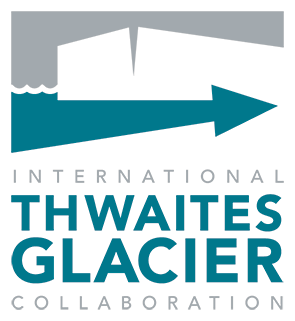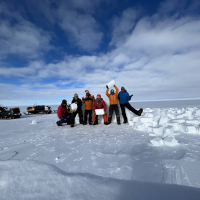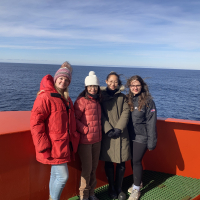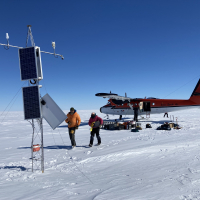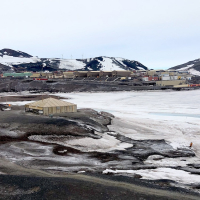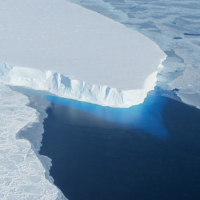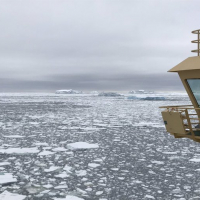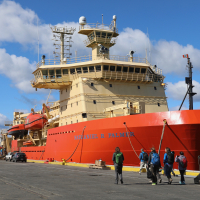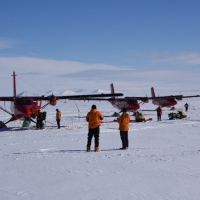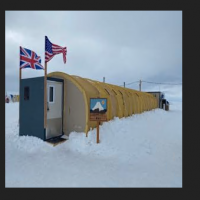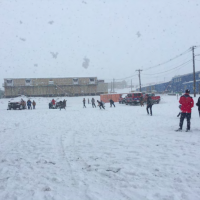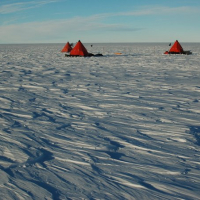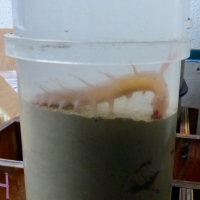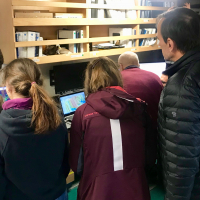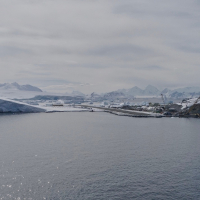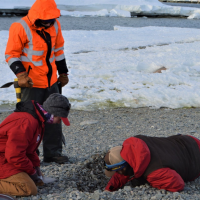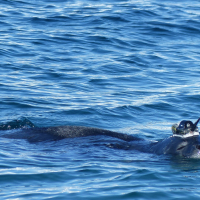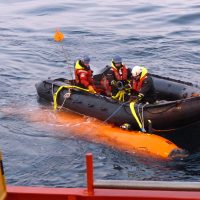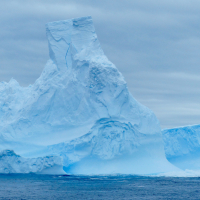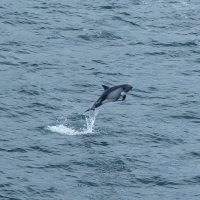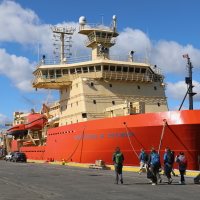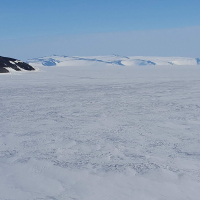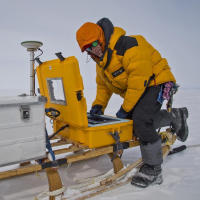Blogs and Writing
TIME field teams retrieve seismic, GPS, and radar data from Thwaites' eastern shear margin
There was a whole lot of digging during this Antarctic summer season (2021-22) at the Eastern Shear Margin (ESM) of Thwaites Glacier by ten intrepid International Thwaites Glacier Collaboration (ITGC) scientists and mountaineers.
Read More
Celebrating International Women’s Day on 8 March 2022
International Women’s Day is celebrated every year on 8 March. This year’s theme is #BreaktheBias
Read More
In the field at last! TARSAN collects data at Thwaites Glacier
TARSAN
The TARSAN ice team swung into action quickly after arriving at WAIS Divide camp (Figure 1 above). WAIS Divide, located on the highest part of the West Antarctic Ice Sheet, was first opened in 2006 in support of a major ice coring effort to gather a record of past Antarctic and global climate data reaching back nearly 70,000 years. Since then, the camp has served as a logistical hub in support of additional work on the borehole, and for other science in the region. WAIS Divide camp is the gateway for the on-ice research on Thwaites Glacier conducted by ITGC scientists across our field seasons.
Read More
TARSAN team reaches McMurdo Station
TARSAN
After two months traveling, quarantine, training, packing, and just plain waiting at McMurdo Station, the TARSAN on-ice team is finally now on its way today to the U.S.
Read More
The ‘Cliff Notes’ on ice-cliff failure
The retreat of large glaciers that drain the Greenland and Antarctic ice sheets could expose immense ice-cliffs at newly-bared calving faces, which are the exposed ends of glaciers where, in these cases, glacier ice meets the ocean. Past a certain height, these ice cliffs will become susceptible to collapsing from high stresses, a process known as structural ice-cliff failure. Read more in this blog post that describes recent research published in Nature Communications.
Read More
THOR research onboard the N.B. Palmer icebreaker through March 2020
THOR
The Thwaites Glacier Offshore Research (THOR) team set sail from Punta Arenas, Chile, on January 26, 2020 and is conducting research in the Amundsen Sea off the coast of Thwaites Glacier.
Read More
US PolarTREC teacher blogs about upcoming research cruise with THOR project, January 2020
THOR
Join teacher Sarah Slack as she writes about her experience as an NSF PolarTREC teacher on board the Nathaniel B. Palmer research vessel.
Read More
GHC update from the field 29 Dec 2019
GHC
The GHC team in the Hudson Mountains seem to have all the luck with weather and logistics this year.
Read More
TIME update from the field 26 Dec 2019
TIME
Greetings from WAIS Divide. Jake Walter here, co-I on the TIME project, which is part of the International Thwaites Glacier Collaboration (ITGC).
Read More
MELT Team at WAIS Divide with Icefin robotic underwater vehicle
MELT
Scientists from the MELT project are in Antarctica this field season. The team aims to use autonomous sensors, vehicles (including Icefin), radar, and moorings to monitor the Thwaites ice shelf and grounding line.
Read More
Recent update from the ITGC
meetings
It has been a busy autumn (for those of us in the Northern Hemisphere) for the International Thwaites Glacier Collaboration (ITGC). And it is about to get much, much busier.
Read More
Snow on Ice: Sea pigs and mud #10
“We found a sea pig last night in one of the Megacore tubes,” Jennie Mowatt, a marine technician onboard, nonchalantly said as she passed around a video on her cell phone for all of the scientists in the meeting.
Read More
Snow on Ice: Synergizing Science #9
The crane lowered the little orange submarine until it finally touched down snuggly onto its ramp on the back deck of the Palmer.
Read More
Snow on Ice: When in Antarctica: the backup to the backup #8
“I think the secret to the work we do in many ways is as much as possible beforehand, asking the question, ‘what if, what if, what if.…’” Andy Smith, a principal investigator on the ITGC GHOST project, commented about working in Antarcti
Read More
Snow on Ice: Geology with a Spoon #7
While the seal team sat on one of the smaller Shaeffer Islands tagging their second and third seals (described in a previous blog post
Read More
Snow on Ice: Seals help scientists explore Thwaites Glacier #6
Calling it seal tagging doesn’t really put the right image in your mind. I had pictured a seal with a small plastic tag attached to its body like you’d see on a cow or pig ear. Seeing it in person was a surprise.
Read More
Snow on Ice: Ice above, warm water below #5
As we travel among the Thwaites menagerie of giant icebergs, it’s hard to believe that a thousand feet below the ship sits warm water.
Read More
Snow on Ice: Into the Ice #4
“Iceberg! Starboard beam.” I was sitting at my computer typing and I think it took a second to sink in for me and everyone else in the room.
Read More
Snow on Ice: The little orange submarine #3
Snow on Ice: Thwaites Glacier Science at Sea
The ship bobbed lazily in the Straits of Magellan, ringed by the snow-capped mountains of the far southern Andes, the sun becoming quite warm, the water still as glass.
Read More
Snow on Ice: Setting Sail #2
Snow on Ice: Thwaites Glacier Science at Sea
We arrived into Punta Arenas on January 26th and met our US Antarctic Program (USAP) representative, Maribel.
Read More
Snow on Ice: Headed south #1
Snow on Ice: Thwaites Glacier Science at Sea
Join Tasha Snow as she reports life on the N.B. Palmer on a research voyage to Amundsen Sea.
Read More
THOR blog - Cruise offshore of Thwaites Glacier
Seven researchers from the Thwaites Offshore Research team embark on a 53-day cruise in the Amundsen Sea to study the ocean off of the Thwaites Glacier.
Read More
TIME blog 2018-2019
Thwaites Interdisciplinary Margin Evolution (TIME) is funded by the National Science Foundation (NSF) and National Environment Research Council (NERC) to study the Eastern Shear Margin of Thwaites Glacier in West Antarctica.
Read More
Instrument Highlight: Phase-sensitive radar (ApRES), Filchner Ice Shelf
Instrument Highlight
Research teams use phase-sensitive radars for determining ice shelf basal melt rates. Data is used to enhance climate models.
Read More
